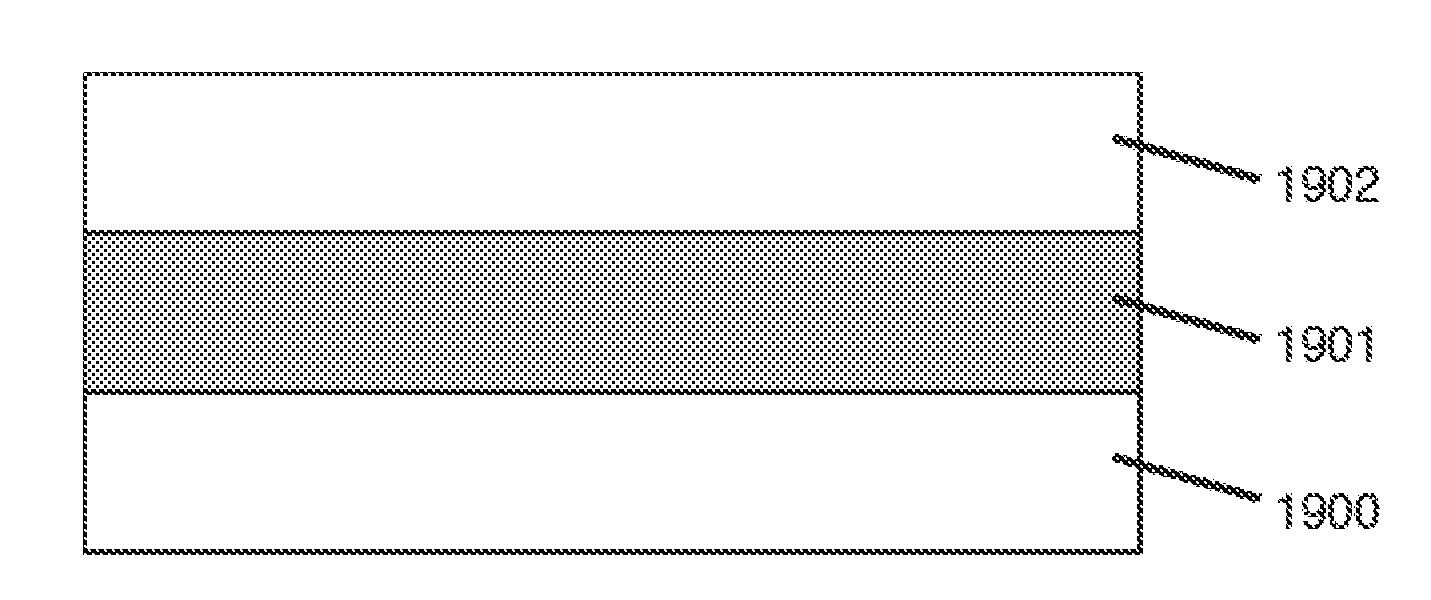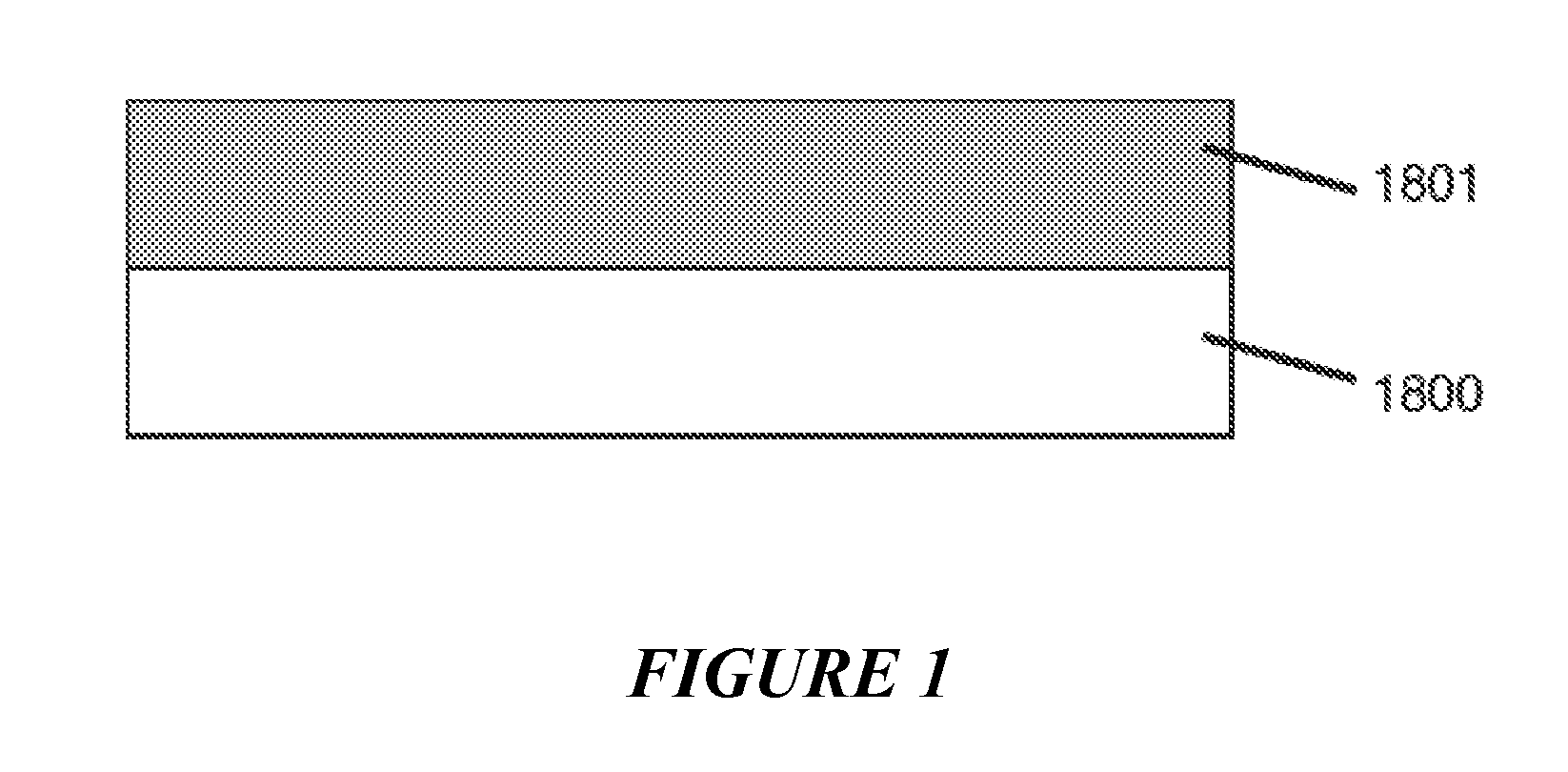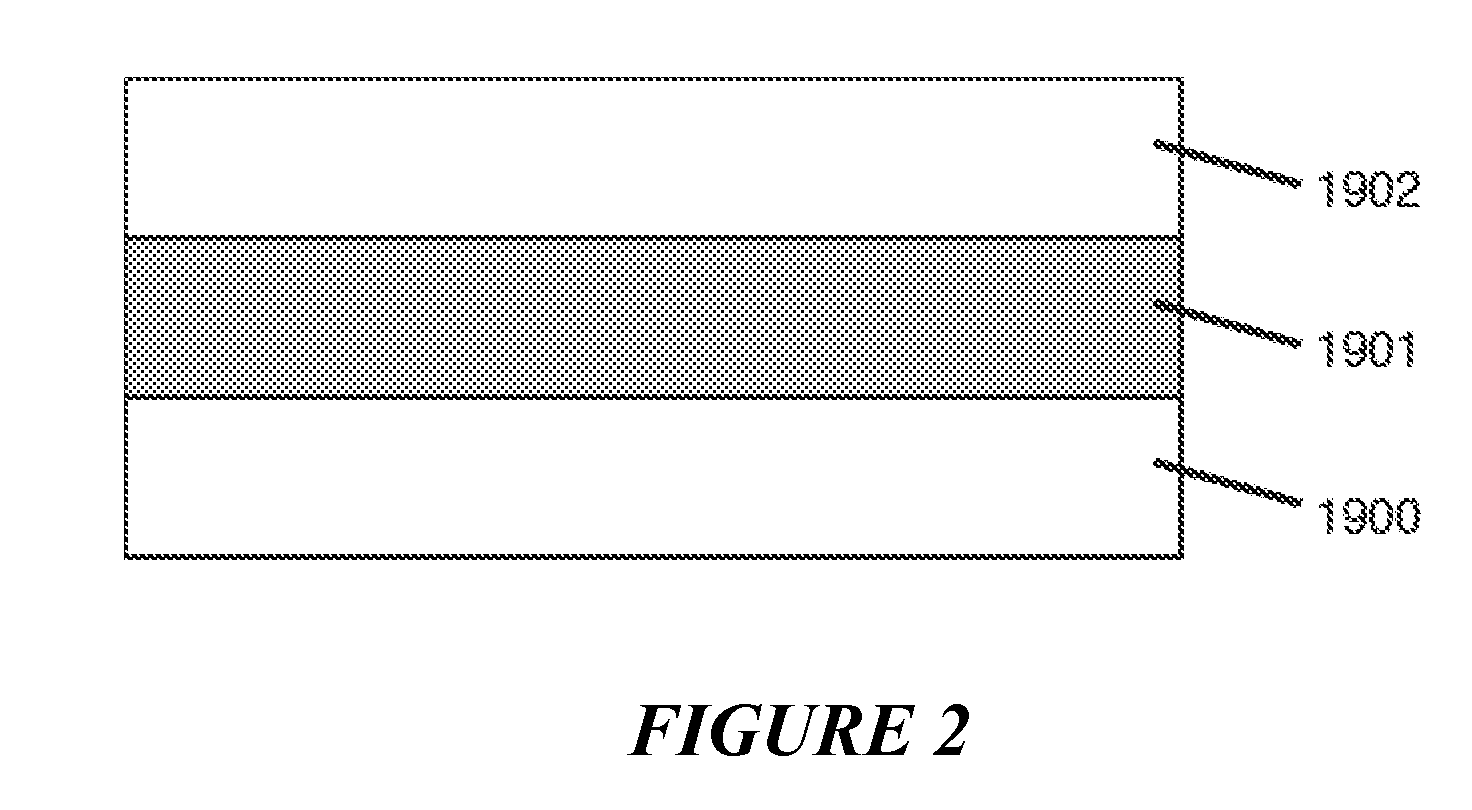Zirconium and Hafnium Boride Alloy Templates on Silicon for Nitride Integration Applications
a technology of nitride integration and silicon, which is applied in the direction of crystal growth process, polycrystalline material growth, chemically reactive gas growth, etc., can solve the problems of complex structure and high fabrication cost, less efficient light-emitting optoelectronic devices having group iii nitrides formed on silicon substrates, and significant drawbacks of si substrates
- Summary
- Abstract
- Description
- Claims
- Application Information
AI Technical Summary
Benefits of technology
Problems solved by technology
Method used
Image
Examples
example 1
Preparation of the Epitaxial ZrB2 Layers
[0150]Thick, monocrystalline ZrB2 layers (up to 500 nm thick) were grown on the Si(111) hexagonal surface at a temperature, pressure and reactant concentration of 900° C., 2-4×10−6 Torr and ˜1% Zr(BH4)4 / H2, respectively. The reaction mixture based on 4 Torr / liter of Zr(BH4)4 and a large excess of research grade H2 was prepared prior to each deposition by combining the pure compounds in a 1000 mL vacuum flask at total final pressure of 400 Torr. The flask was connected to the gas injection manifold of the deposition chamber, and the manifold was pumped to ˜10−8 Torr. A boron doped (1-10 Ω-cm), Si(111) wafer was cleaved to 1 cm2 size substrates to fit the dimensions of the sample stage. Each substrate was sonicated in methanol for 5 minutes, dried under a stream of purified N2, inserted through a load lock into the growth chamber at a base pressure of 4×10−10 Torr, and heated at 600° C. under UHV to remove surface contaminants until the pressure...
example 2
Structural and Morphological Characterization of Epitaxial ZrB2 Layers
[0152]The resultant films of Example 1 are fully commensurate and perfectly oriented with the underlying hexagonal surface as evidenced by various microstructural and surface characterization techniques including Rutherford backscattering (RBS) ion channeling, atomic force microscopy (AFM) and transmission electron microscopy (XTEM) (see FIG. 3). The latter reveals that heteroepitaxy between ZrB2(0001) and Si(111) is obtained via coincidence-misfit mechanism in which five lattice rows of Si are aligned with every six rows of ZrB2, (i.e., “magic mismatch”). This registry results in a periodic array of edge dislocations along the interface which accommodate the large difference in lattice constants.
[0153]As mentioned above it is extremely critical to maintain the optimal growth conditions and any deviations, however minor, invariably result in either negligible growth of crystalline material or in the formation of p...
example 3
High Resolution XRD Film Strain Studies of Epitaxial ZrB2 Layers
[0154]The structural quality and crystallographic orientation of these thick films of Example 1 were analyzed by high resolution x-ray diffraction (HR-XRD) using a Panalytical X-pert Pro diffractometer. The θ-2θ scans revealed only the (001) and (002) peaks of the hexagonal lattice, indicating that the heterostructure is highly oriented and epitaxial. The double crystal rocking scans of ZrB2(001) showed full width at half maxima (FWHM) of 0.15 degrees for 500 nm thick films, indicating no significant tilt between the crystalline domains, consistent with extremely narrow mosaicities within the horizontal direction. For samples with a nominal thickness up to 100 nm a symmetrical envelope of interference fringes is also present in the vicinity of the ZrB2 peak in the θ-2θ diffraction patterns. For higher thickness samples these fringes merge within the parent (001) peak.
[0155]Extensive off-axis high-resolution measurements...
PUM
 Login to View More
Login to View More Abstract
Description
Claims
Application Information
 Login to View More
Login to View More - R&D
- Intellectual Property
- Life Sciences
- Materials
- Tech Scout
- Unparalleled Data Quality
- Higher Quality Content
- 60% Fewer Hallucinations
Browse by: Latest US Patents, China's latest patents, Technical Efficacy Thesaurus, Application Domain, Technology Topic, Popular Technical Reports.
© 2025 PatSnap. All rights reserved.Legal|Privacy policy|Modern Slavery Act Transparency Statement|Sitemap|About US| Contact US: help@patsnap.com



